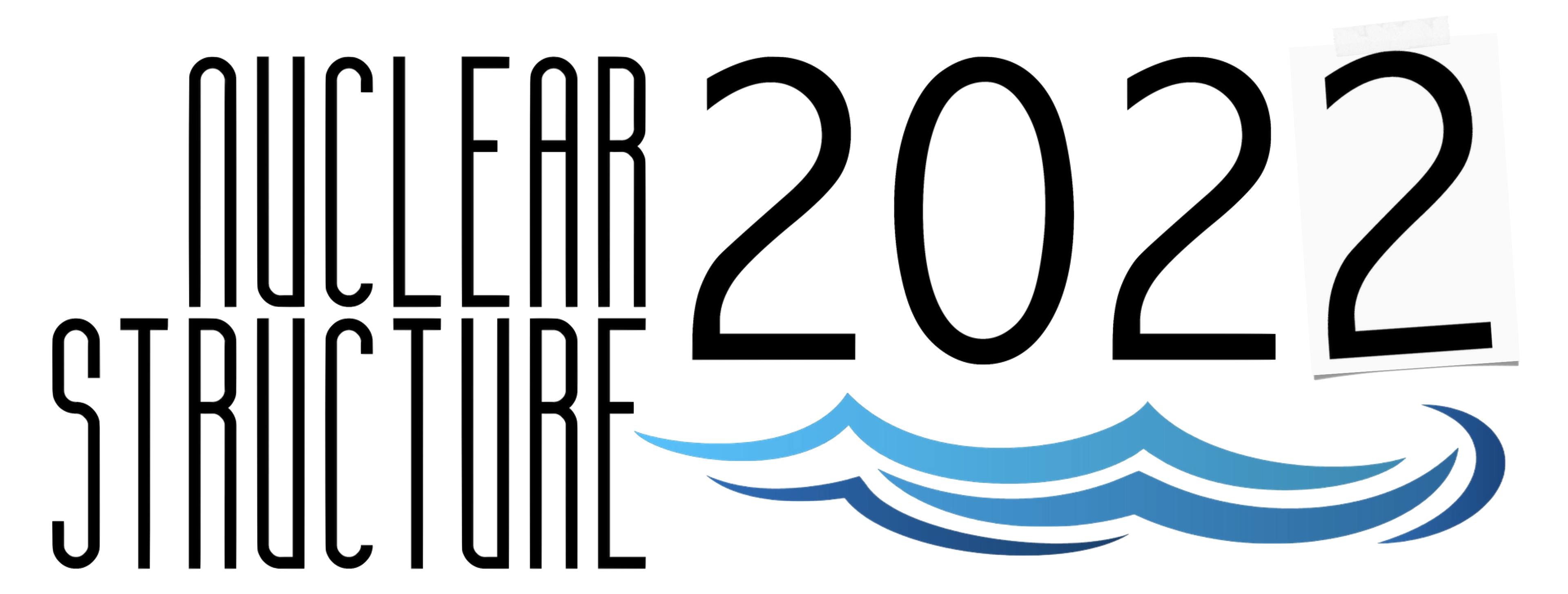Speaker
Description
Atomic nuclei having (almost) the same number of neutrons (N) and protons (Z) attract a great deal of attention due to the various interesting physics phenomena associated with these systems. During the past few decades the focus has been on the isospin symmetry properties of the nuclei located around the N = Z line. More recently, owing to the development of radioactive ion beam techniques, collective properties and shape evolution around the N = Z line have also been investigated.
Arising from the charge-symmetry and charge-independence characteristics of the strong nuclear force, isobaric analog nuclei with the same mass A = N + Z, but the neutron and proton numbers differing as N = Z - 2, N = Z and N = Z + 2, should contain the same set of excited states at similar excitation energies. This manifestation of isospin symmetry is broken by the Coulomb interaction and leads to Coulomb energy differences (CED) in the level energies. The CED can give information on the microscopic structure of nuclei and allows to investigate if the isospin symmetry is further broken in addition to the Coulomb interaction. Actually, several shell-model analyses made for the isobaric triplets in the A=50-70 mass region have indicated a need for a schematic isospin-breaking two-body interaction beyond the Coulomb force in order to reproduce the experimental CED data.
Currently, information on the T = 1 states in N = Z - 2 and N = Z nuclei with mass A = 62-78 are scarce due to the experimental challenges to study these systems. For 62Ge there are no firm data on the excited states and for 62Ga the available information on the T = 1, 2+ state is contradictory. In 66As and 66Se the T = 1 bands are known up to the 6+ state, 70Kr and 74Sr are both known up to the 4+ state and in 78Zr excited states are not known at all. This is clearly a major hindrance to advance the isospin symmetry breaking investigations at the heavier end of the N = Z line.
During the past two years, the isobaric triplets in the A = 62-78 mass region have been systemically studied at the Accelerator Laboratory of the University of Jyväskylä (JYFL-ACCLAB). These studies, using fusion evaporation reactions, employed the vacuum-mode recoil separator MARA and JUROGAM 3 germanium array together with the JYtube charged-particle veto detector and new position sensitive scintillation detector for the detection of fast and high-energy beta particles. The well-established method of recoil-beta tagging, where the reaction product of interest is identified based on its characteristic beta-decay properties, has been the primary tool to find the weak gamma-ray transitions originating from the exotic N ≈ Z nuclei. However, this method does not allow for the unambigous discrimination between the gamma rays from the N = Z - 2 and N = Z members of the triplet, which both are Fermi super-allowed beta emitters with nearly identical beta decay properties. Therefore, to get access to the neutron-deficient N = Z - 2 member, recoil-beta-beta tagging method was recently successfully demonstrated to unambiguously identify gamma-ray transitions from 62Ge for the first time.
In this presentation, the recent experimental advances in the instrumentation and methodologies achieved at JYFL-ACCLAB to increase the detection sensitivity for the studies of heavy N ≈ Z nuclei will be discussed together with the new spectroscopic data on these nuclei obtained during the past two years.

